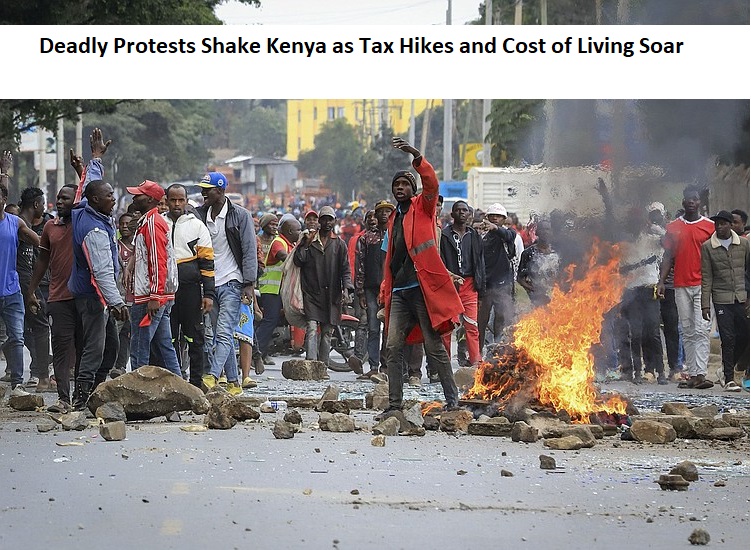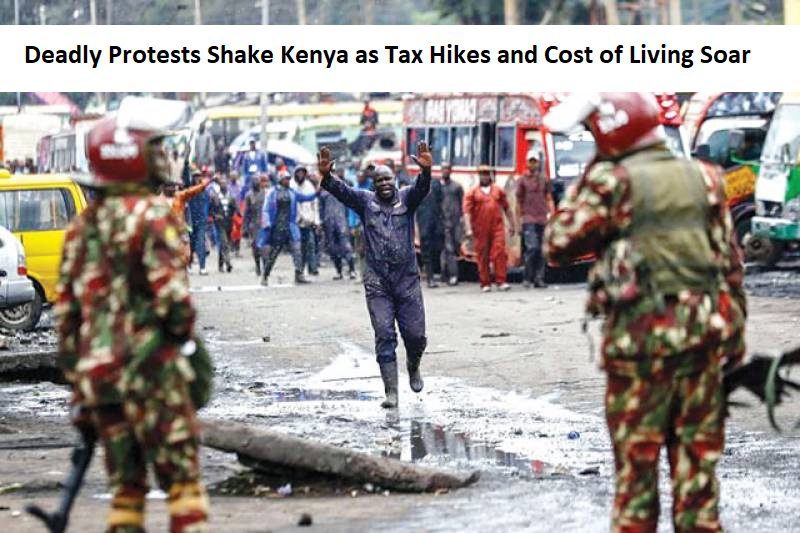Protests in Kenya: Tax Hikes and Cost of Living Soar
Tax hikes and the rising cost of living have sparked deadly protests in Kenya. The latest protests have resulted in three deaths, numerous arrests, business attacks, and school closures.
The UN is concerned about protester-police violence. President William Ruto maintains that protests would cause anarchy, so the government will not allow them. Unpopular tax increases by the government caused the unrest. The government raised petroleum product taxes despite a court order, raising transportation and staple food prices.
President Ruto, who promised to help the poor, has disappointed many Kenyans. After ten months in office, the cost of living has risen, worsening living conditions for many. The removal of subsidies on maize flour and other economic policies has left citizens feeling betrayed and discontented.


In the face of a battered economy, high inflation, debt, unemployment, and post-COVID stagnation, President Ruto defends these taxes as necessary to create jobs and increase domestic revenue. However, critics argue that these measures are untimely given the precarious economic situation and the burden they place on salaried workers who are already struggling to make ends meet.
Raila Odinga and his coalition, Azimio la Umoja (One Kenya), are leading the protests. Kenyans frustrated with the high cost of living have joined the protests, which began over the election. Both Odinga and Ruto remain steadfast despite failed talks. The opposition plans to continue protests while the government stands firm against hooliganism and property destruction.
Kenya’s government must balance economic stability and public discontent as protests continue. Citizens want relief from rising living costs.
Also Read: Netflix Gains Nearly 6 Million Paid Subscribers with Password Sharing Crackdown
Our Reader’s Queries
What is the crisis in Kenya right now?
Kenya is grappling with two major humanitarian crises: drought and the refugee crisis. The arid and semi-arid counties, covering almost 80% of Kenya’s land, are currently enduring severe drought conditions. Meanwhile, Kenya has been providing refuge to displaced people from neighbouring countries since 1991.
What happened in Kenya 2023?
30 March saw a tragic collision between a Pwani University bus and a minibus in Naivasha, resulting in the loss of 14 lives. Then on 8 April, a similar devastating event occurred in Migori, as a truck lost control and struck down at least ten pedestrians, causing fatal injuries.
What was the problem in Kenya?
Following this flawed process, Kenya, previously considered a stable haven in Africa, is now grappling with outbreaks of ethnic violence, a worsening humanitarian crisis, economic upheaval, and lingering uncertainty about its political trajectory.
How democratic is Kenya?
Kenya’s political landscape operates within a presidential representative democratic republic framework. Here, the president holds the dual role of head of state and head of government. The country also follows a multi-party system, aligning with the provisions of a new constitution ratified in 2010.

